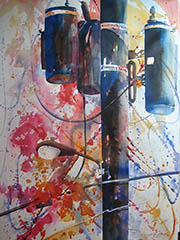The artist's eye—the artist's soul
The artist's job is to take an everyday subject and convert it from the mundane to the magnificent. We see beauty every day, but it's not easy to capture that beauty on canvas or a sheet of paper or even in a photograph.
What we do
We work and sweat and finally create something that's suitable only for the trash can. What's wrong? What happened? How could hours or days of artistry turn out like this?
Why?
Our brain sees more than our eyes. That's why we can discern what's beautiful and what's ugly. But beauty and ugliness and blandness are just feelings. How can we explain it to someone else? "You should have seen that beautiful sunset. It was red and yellow and purple and . . . "
Get the idea? It's just not the same, is it?
What's the secret?
The secret is to zero in on what attracted you to the subject. If you're painting a a vase of flowers just because other people paint flowers, you'll get a boring painting that looks like thousands of boring paintings that came before.
But if you paint the vase of flowers because you were stirred by it, then you have a chance. First comes the emotion, and then comes the the hard part—putting that emotion into your art.
It's difficult, so don't make things worse by starting with a subject that does not move you.
Your role as an artist is to make the viewer see what you saw. But you do that by making the viewer feel what you felt. This is the subtle link between the eye and the soul. It's the hardest thing you'll ever do as an artist.
Still lifes don't have to be stiff and conventional.
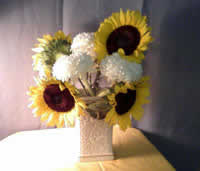
I was interested in the different techniques used by five artists in creating their own personal still life paintings. Even when painting in the same genre, artists vary their approach, methods, and point of view.
This is the still life setup.
In these examples, you can see some work in progress as artists make the subject more than just a painting. They're making art.
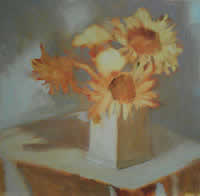
Dianne Harrison's unfinished work in the under-painting stage. It's lovely just as it is.
Look at the subtle colors and how they differ from those in the original.
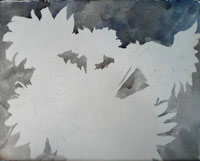
Jane Springfield's version in two stages. First, the negative shapes for the background, and second, the developing painting.
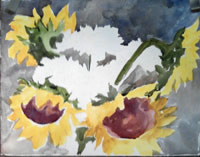
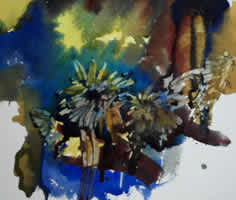
I took a nightmarish abstract approach because I just don't like to paint flowers. I concentrated on the basic shapes and went wild with the colors.
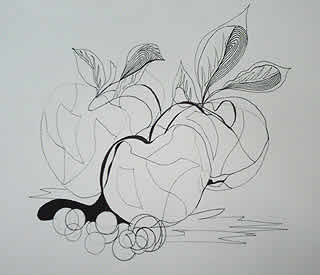
On the other side of the studio, Wanda Walston was her own world, creating her own still life, using her own primary colors of black, black, and black.
This is soft and delicate and full of pattern and texture.
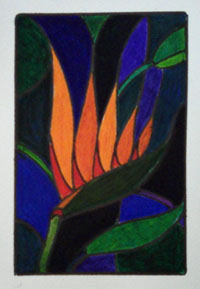
Hart Paul had something else going on with this colorful Bird of Paradise. The reds and oranges are virtually bursting out of the painting. A strong painting with bright complementary colors. His graphic arts background is evident.
We have five artists painting a still life—three of them painting the same still life. Each painting has its own personality. These are not boring copies of real subjects. Instead, they show some flair and inventiveness, and you can see a bit of the artist's soul in each picture.
Your assignment
Take a theme like flowers and try to break away from the conventional approach. Make the subject something special, and make it more than just a dull copy of the original.

